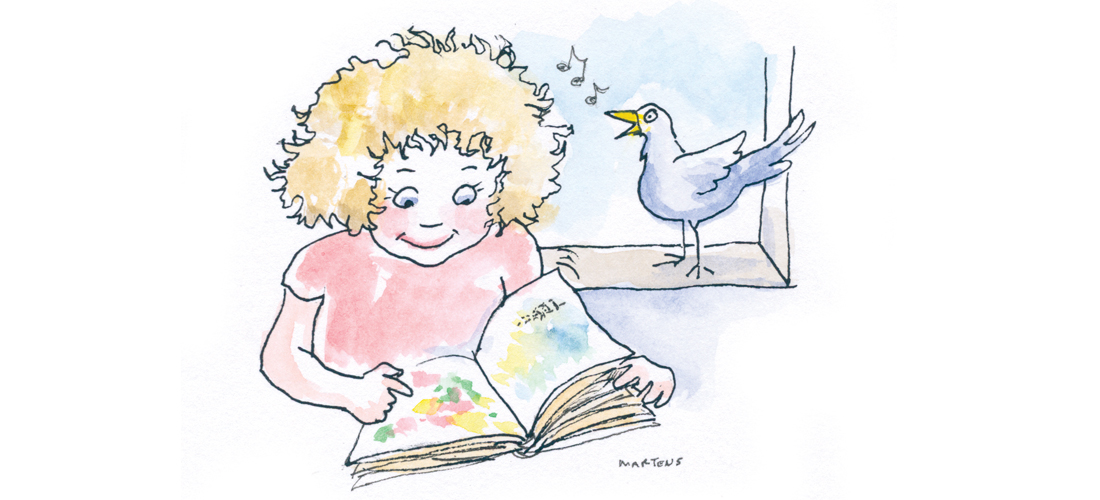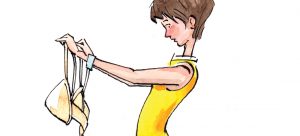
Garden of Plenty
Reading, rereading and speed-reading children’s classics suspends time
By Jane Borden
I often wonder if the writers of children’s books would approve of how I abridge their works as my toddler speed-turns the pages. She was most aggressive about it between 18 months and 2 years. I think she had confused reading with the act of flipping paper.
She isn’t wrong. With a book, function is form. And there certainly are endless tomes to flip through, so let’s not delay. Besides, she quotes the books to me, so our pace can’t be diminishing comprehension much. I suppose every generation consumes content faster and with more discretion than the previous cohort. She may have been born to speed-read.
Although I appreciate the convenience of a truncated bedtime routine, her haste sometimes leads to a role reversal, in which I request we slow down. This especially happens when we read a book from my own youth. The Very Hungry Caterpillar remains as charming and beautiful as it ever was, as does A Color of His Own, their staying power a result of their stories’ simplicity. A caterpillar prepares for and undergoes a transition — it’s an inexhaustible metaphor. The chameleon feels different until it finds another like itself — a fundamental shared human experience. Did I understand these meanings as a child? Does Louisa now?
Mom remembers me begging for books. Dad says he often fell asleep at my side before I did while reading to me. I don’t remember. One privilege of parenthood is the opportunity to glimpse back at your own childhood — the way you understood the world before you started making memories of it — through the eyes and experiences of a child. By studying my daughter’s engagement, I can touch myself through time.
Eager to facilitate such time-traveling experiments, I ordered a copy of Robert Louis Stevenson’s A Child’s Garden of Verses. The collection of poems, first published in 1885, was a staple of my early years, as well as of my parents’ childhoods. My mother’s mother, Lou Tucker — known to us as Nana and for whom my daughter is named — often quoted “Time to Rise” on mornings when we slept at her house on West Newlyn Street.
A birdie with a yellow bill
Hopped upon the windowsill,
Cocked his shining eye and said:
“Ain’t you ’shamed, you sleepyhead!”
My dad had forgotten the poem’s origin and thought he knew it from her. Later, when he read A Child’s Garden of Verses to my sisters and me, he rediscovered the poem in the book, to his delight. Now my sister Tucker quotes “Time to Rise” to her boys. The first time I read it to Louisa, she asked, “What’s he name?”
Louisa wants every illustrated character to be accounted for by moniker. If a story doesn’t specify a name for a pictured character, she’ll ask, “What’s she name?”
Sometimes I reply, “I don’t know. What do you think her name is?”
“Ellie.”
“Ellie sounds right,” I agree, and continue reading. Other times, when she asks, I spit forth whatever name pops into my head, without breaking stride. Either way, if ever she stops me from turning a page, I know that somewhere on that spread is a character in need of appellation. Presumably, as a child, I also saw people that way, as incomplete — or at least inscrutable — until they were named. Perhaps this is the root of the story in Genesis, when Adam names the animals, to illustrate something fundamental in our brain development.
What I admire most about A Child’s Garden of Verses is how effectively Stevenson conjures the perspectives of children. The poems are often reveries, similar to play itself, exploring a moment or image, developing without purpose or direction. What a child describes to readers in “The Swing” is governed by the cycle of the swing itself. “Up in the air and over the wall,” there are “rivers and trees and cattle and all.” On the way back down, there is the “garden green”— until the child hurtles upward again. It is only three stanzas long, chronicling two repetitions of motion, yet it evokes in the reader the feeling of rushing up and down ad infinitum, seeing new lands only to have them disappear and be discovered again.
In “From a Railway Carriage,” a child literally just describes whatever appears in the train’s window as it rolls along, and then whatever appears next. It’s the poetry version of object permanence.
“The Land of Counterpane” is my favorite. Reading it to Louisa, when the book first arrived, it summoned such powerful sense memories that I suspect I memorized the poem for some school assignment or another. I paused upon finishing it, trying to pull shadows from my brain. She tugged at the page to turn it. I obliged and moved on, just as I did, presumably, after whatever prior reading since lost.
The narrator of the poem recalls being sick in bed and spreading his toys — leaden soldiers, ships, trees, and houses — over his bedsheet. He was the giant, he says, watching over the land of counterpane. It’s a simple and wholly pleasant image, as most of Stevenson’s are, and somehow is also nostalgic and melancholic.
This is Stevenson’s sleight of hand. A child plainly depicts an experience and it’s like he’s plunked a baited fishing line into your brain, catching and plucking out the same memory from your own childhood. I wonder if adults love the book more than children do — and which of the two he meant it for.
If the bulk of the book’s poems are indirectly nostalgic, a section of dedications at the end more overtly yearns. The author addresses family members and childhood playmates, calling on “time which none can bind.”
The last poem, “To Any Reader,” invites us to see other children “through the windows of this book” — children who are also playing in a garden or reading. But then Stevenson reveals the child to be a mirage, “For, long ago, the truth to say, / He has grown up and gone away, / And it is but a child of air / That lingers in the garden there.”
I’m not a Stevenson scholar, but I suspect this mirage child is the reader herself. For those of us prone to nostalgia, it is a comfort to be told I can’t reach her because it gives me permission to leave her alone. What’s she name? I can’t recall.
However, Stevenson does not seem to suggest that the impossibility of success should stem one’s efforts. And so I search for clues by watching Louisa, and I meanwhile enjoy the data she provides. Currently, she is the child of air she’ll never know, but whom I can.
My own mother says I made her pause on every page before letting her turn it, and that I caught her every time she tried to flip more than one at a time. OH
As she currently speed-reads her way through Tolstoy’s War and Peace, Jane Borden finds it difficult to remember what he and she names are.





